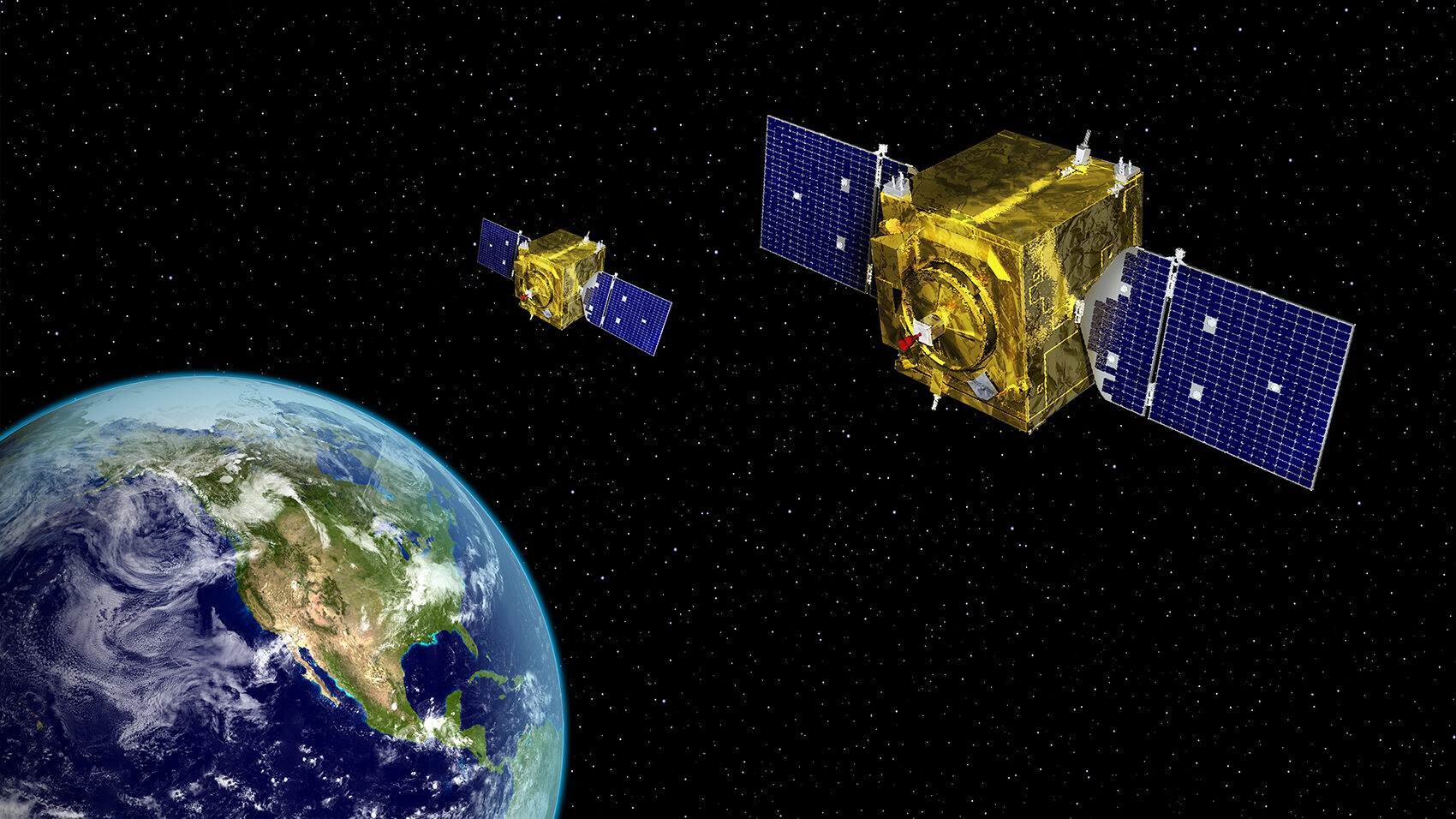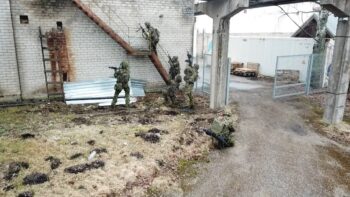
GSSAP space domain awareness satellite (Air Force Space Command archive)
SPACE SYMPOSIUM — Space Command is targeting 2026 for a demonstration of capabilities, such as on-orbit refueling, to allow satellites to maneuver at will over long periods of time — with a goal of getting new constellations so equipped on orbit by 2030.
Speaking to reporters today on the margins of the Space Foundation’s annual Space Symposium, Gen. John Shaw, SPACECOM’s second in command, stressed that SPACECOM isn’t trying to dictate a solution, rather is interested in both technologies and/or operational methods that can flesh out the new concept of “dynamic space operations.”
“Show me something [that] gives me an idea of … how we might solve this,” he said. “I envision that could be a on-orbit refueling capability where we would maybe, tank up, go burn it all and go tank up again. Or maybe it’s: ‘Hey, here’s how we’re going to give you 10 satellites in short order to do the work of two satellites, but then you just use them really quickly.’ And those may be not even the right solutions. We just want someone to come and give us a demo of how you think you solve this challenge.”
Shaw explained in his formal remarks to the Symposium that dynamic space operations refers to a “new class of platforms … whose primary missions are within the domain itself.”
The closest current example, he said, is the Geosynchronous Space Situational Awareness Program (GSSAP) neighborhood watch satellites that were designed to maneuver to be able to keep tabs on adversary satellites in GEO orbit some 36,000 kilometers above the Earth.
But GSSAP has very limited maneuverability because it has a finite supply of fuel.
“We have a new class of platforms coming,” Shaw said, that will require that “sustained space maneuver” capability.
Meanwhile, the Space Force is rushing to meet SPACECOM’s demand, speeding toward a new acquisition plan for space “mobility and logistics” — including on-orbit servicing and repair, satellite refueling and space junk cleanup — a plan that will lean heavily on use of commercial capabilities, the service’s lead for the effort said Tuesday.
“We have a signed requirement for this,” Maj. Gen. Stephen Purdy, program executive officer at Space Systems Command (SSC) for Assured Access to Space, told reporters. “We are doing an accelerated AOA [analysis of alternatives] at Pentagon and Joint Staff requests. So, is it is an accelerated AOA, in that we were heavily biased toward commercial.”
SSC is the Space Force’s primary acquisition command. In late February, SSC officially launched a new mission area under Purdy’s shop, called Space Access, Mobility and Logistics. Col. Meredith Beg, SSC deputy director of Operations, Space Mobility and Logistics, is leading that office.
As the title suggests, the acquisition plan for the new mission area is aimed at a number of separate but related technologies and capabilities.
Purdy explained that the idea is “to get after refueling, repair, maneuvering around — so [satellites] don’t have to use their own gas and fuel — taking debris out, all sorts of activity. … And in contemplating that next step, there’s a lot going on. It’s really like we’re just sort of going on all streams all simultaneously.”
For example, he explained, on-orbit servicing is “pretty much a brand new mission area that hasn’t been done in a large sense,” although there have been “piecemeal” efforts. For example, he said, NASA’s Hubble Space Telescope was designed to be serviced in future to keep it operational.
“We’re looking at building on a larger [scale],” he explained.
As a first step, he noted, SSC is trying to suss out the commercial market and figure out what tech and capabilities are already, or very nearly, available.
“It is amazing how many companies are into the on-orbit servicing, but it’s actually hard to keep track,” he said. “Job one is to get our arms around all of these companies. What are their timelines? What are their plans, what are their philosophies? How are they going about business?”
SSC’s February announcement further noted that Purdy’s shop “received $30 million in the FY23 National Defense Authorization Act in Research Development Test & Evaluation (RDTE) funds to help advance development of a concept of operations, including working through what space assets are on orbit or planned to be on orbit and how to potentially leverage those assets to service or intercept and tow to a graveyard orbit should something go wrong.”
SSC’s mission planning also is “about discussing terminology and changes in doctrine. So, it’s actually the concept of space mobility and maneuver. It’s actually in Space Force doctrine, even though we didn’t have an acquisition program or any operations [before],” Purdy said.
The ultimate goal, he said, is to create an ecosystem for providing “space logistics” — a concept that is still evolving but that he and other Space Force officials have suggested could include things like on-orbit fuel storage and even space stations housing Guardians to work on satellite repairs or upgrades.
“Space logistics hasn’t kind of been a thing before … getting into actual logistics discussions with logistics communities,” he noted.






















